A Day in the Life of RIPE Ambassador Matthew Siebers
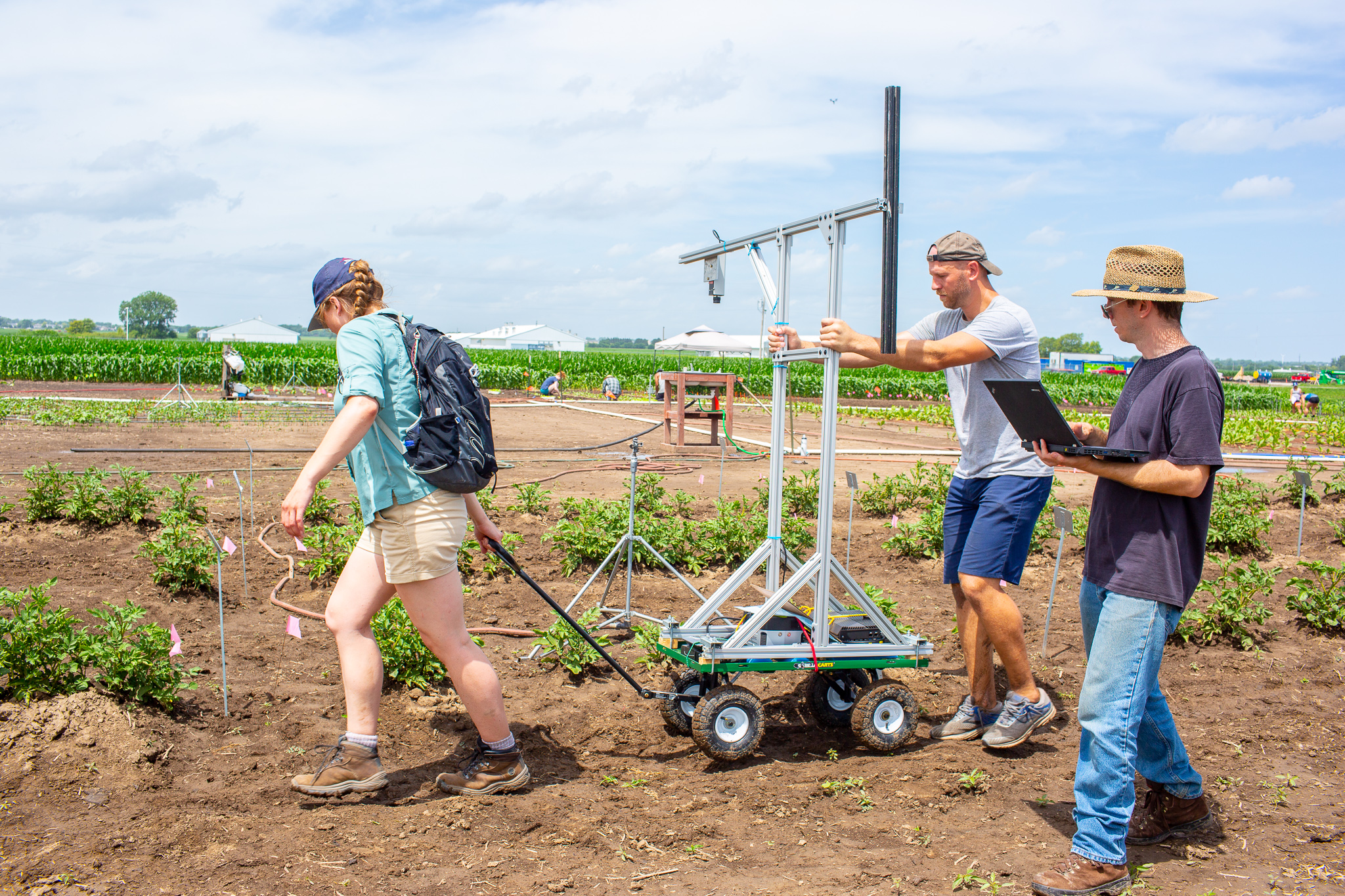
The RIPE project has members all over the world working together to improve photosynthesis in crops to feed our growing population. This Day in the Life series focuses on showing a more personal light into what researchers do during their workday–in the lab or field–highlighting what they do to make our project possible. We introduce you to Matthew Siebers, our 2022-2023 RIPE Ambassador.
The RIPE Ambassadors program was established to give Early Career Researchers (ECRs) a voice on the Executive Committee, with two ambassadors–each from different institutions–elected inaugurally. They represent the ECRs on the project and bring forward with their ideas and concerns.

Hi, I'm Dr. Matt Siebers, a post-doctoral researcher in Carl Bernacchi's lab working on the RIPE project. I help to coordinate research under the RIPE Aerial Plant Phenotyping System (RAPPS), where we use and develop new sensors to rapidly detect physical and physiological differences in plants. Phenotyping research aids the RIPE project by accelerating research. One can more fully understand when, where and why plants in the RIPE project are performing better.
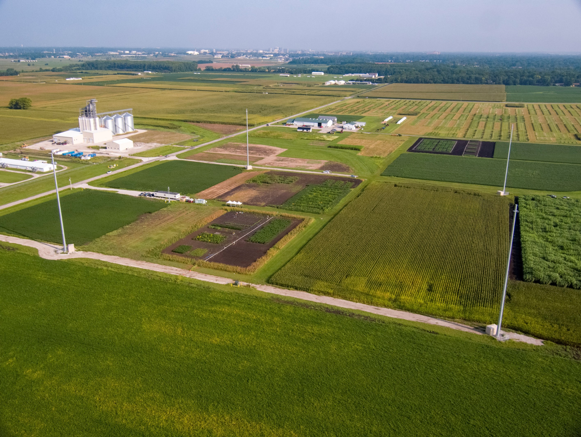
This is an aerial view of the RAPP System, located at the Energy Farm at the University of Illinois. There are four 150-ft. tall towers with cables suspended from the top, and winch houses at the base. The coordinated movement of the winches allows us to control the research platform and move it over an area of ~9.5 acres. The RAPP system is the largest outdoor measurement platform of its kind.
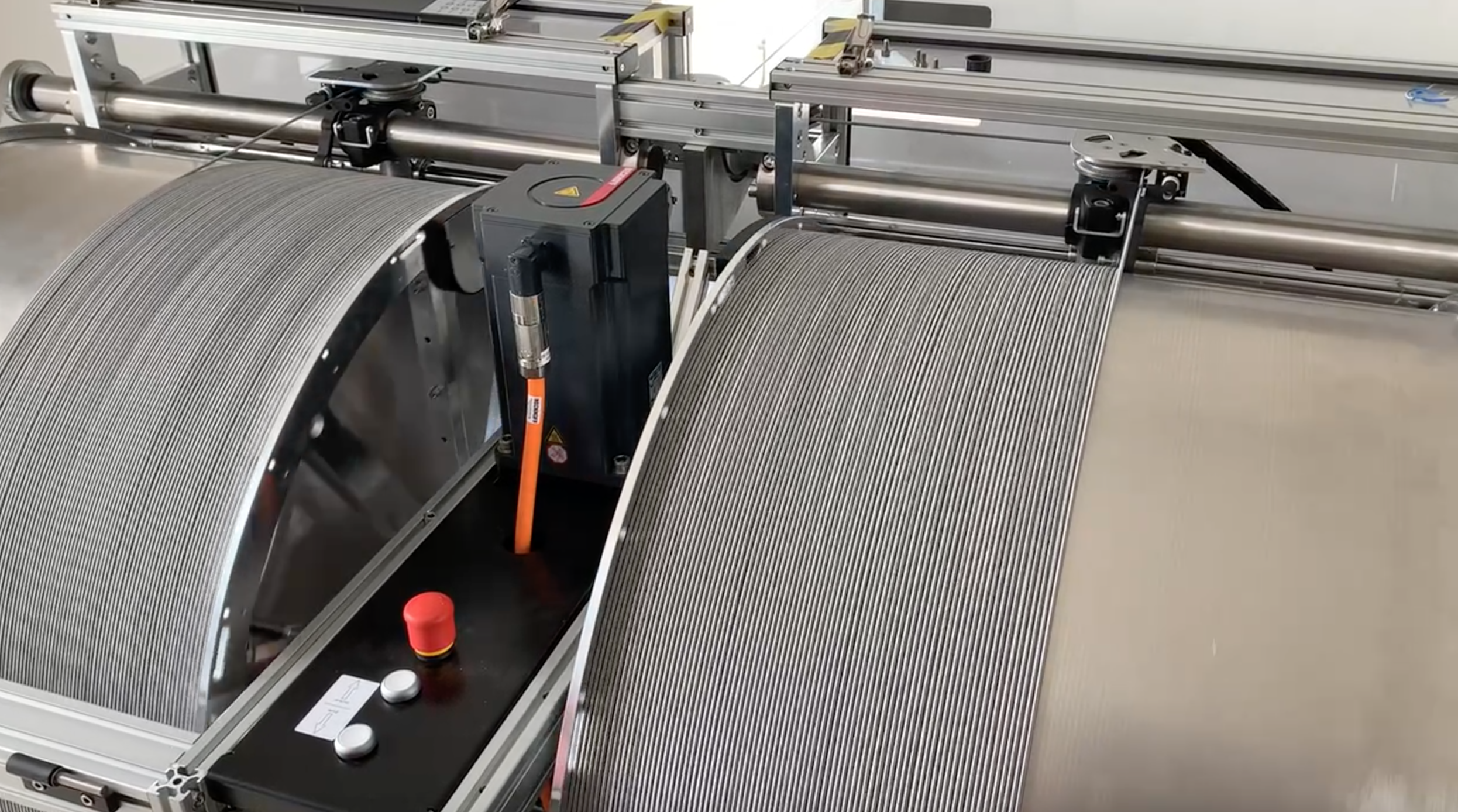
This shows one of the winches at the base of a tower taking in cable. The four winches communicate via fiber optic cables buried underground. Their coordinated movement allows the research platform to be moved around with millimeter precision.
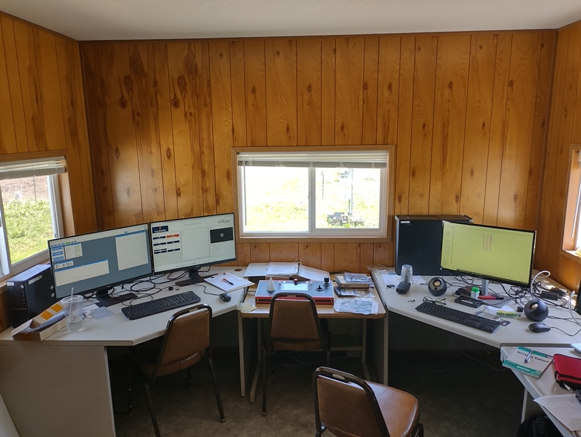
This is the trailer where we control the movement of the RAPP system. Our senior programming engineer has written software that automatically moves the research system around the field site and captures data in each plot.
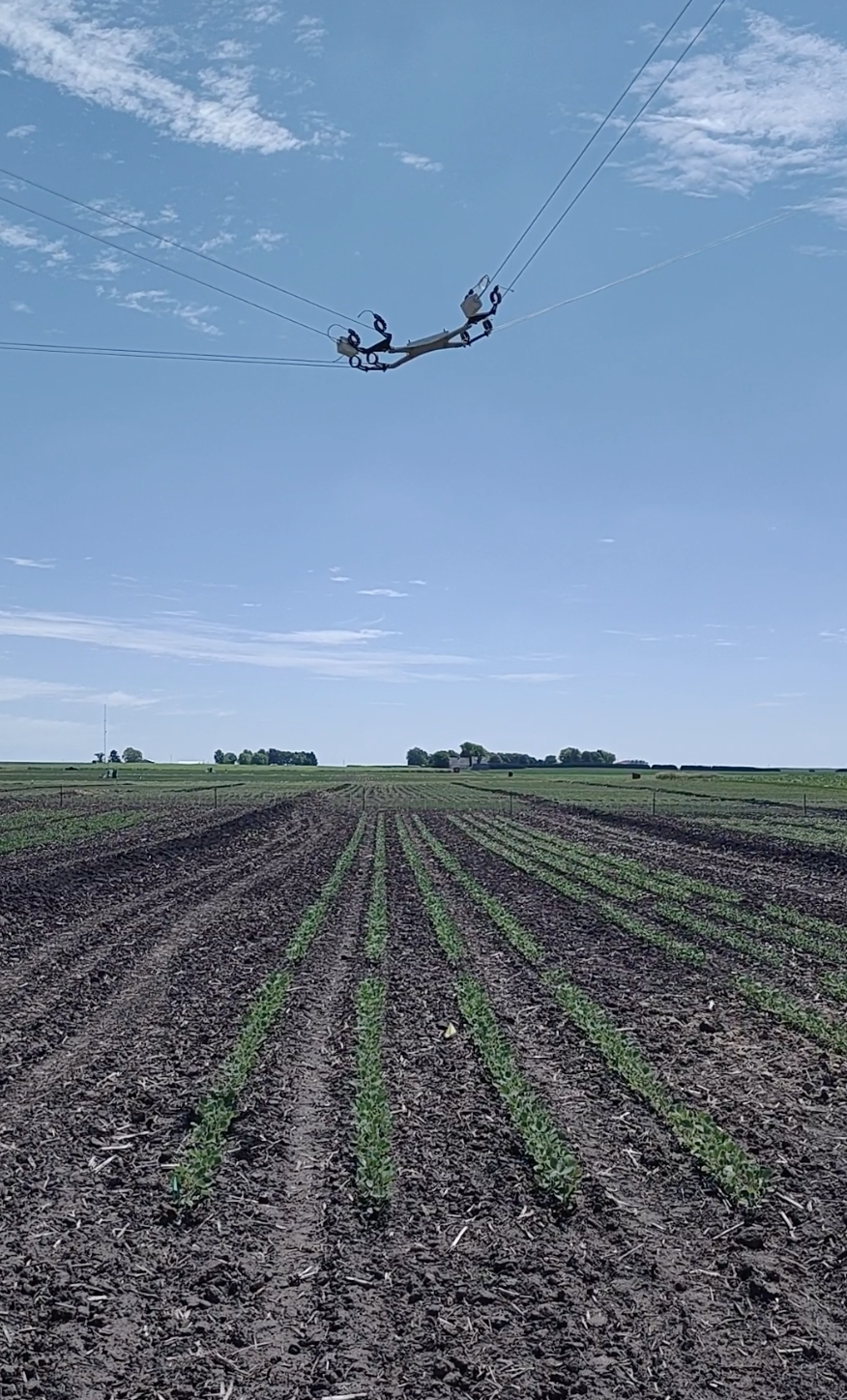
Here is what it looks like after we've programmed in the coordinates of an experiment to the RAPP system. In this instance, we are moving around a metal plate instead of the sensor package. Here, we move the platform to the beginning of an experimental row at 8m height, drop the height to 5m and then move the system directly over the experiment of interest. This is when data collection would happen. The speed of the dolly is set to 450 mm/s and the operation speed is very consistent.
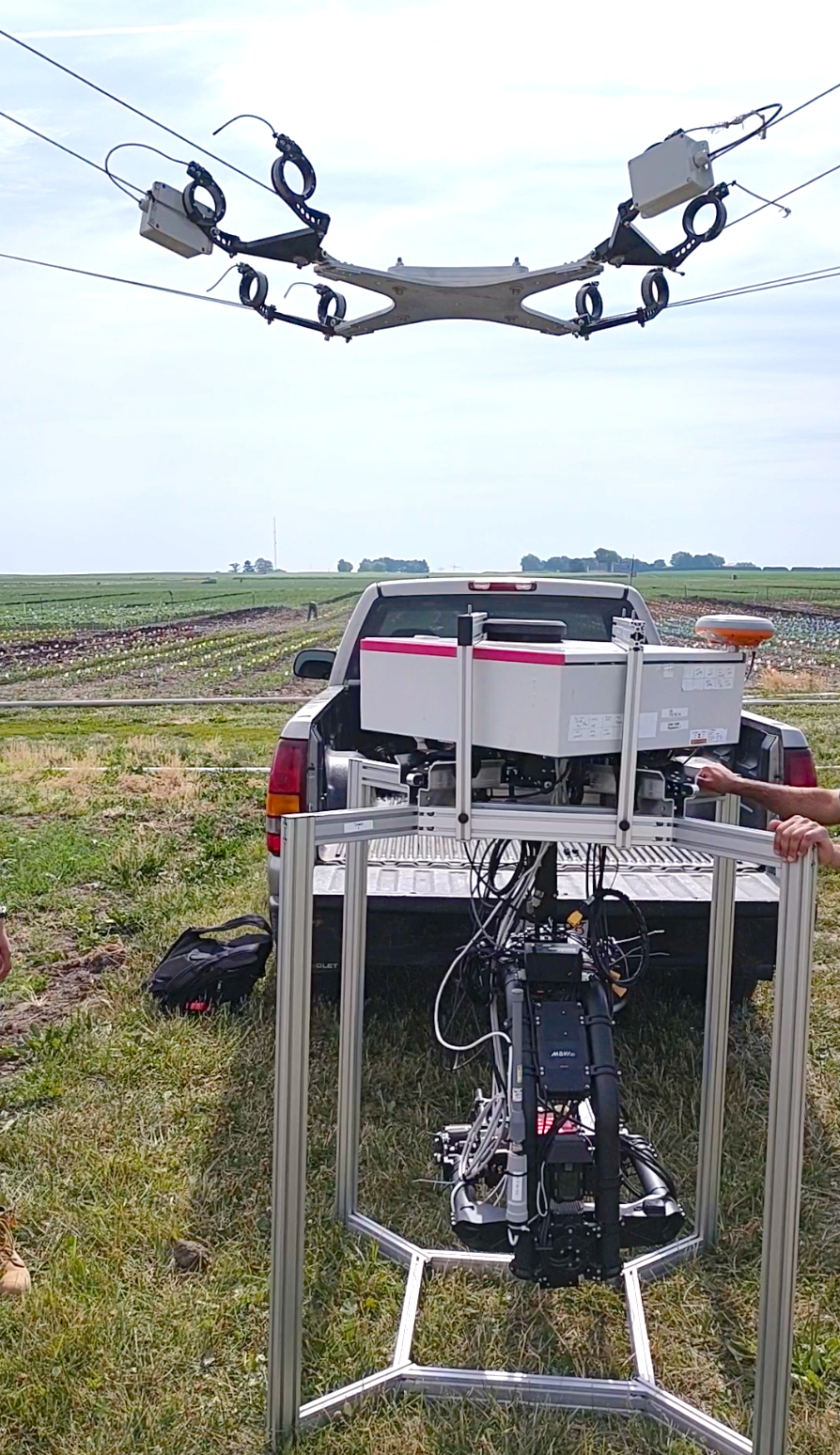
Before we can utilize any of the sensors or the programmed automation, though, the sensor package needs to be mounted to the RAPPS cable. Here we are flying the "dummy dolly" down so we can swap the cables onto the measurement system and fly it up. The dummy dolly is a ~75 lb aluminum weight that is used to keep tension on the cables when the sensor package is stored and not in use. The total weight of the sensors and computer is ~85 lbs.
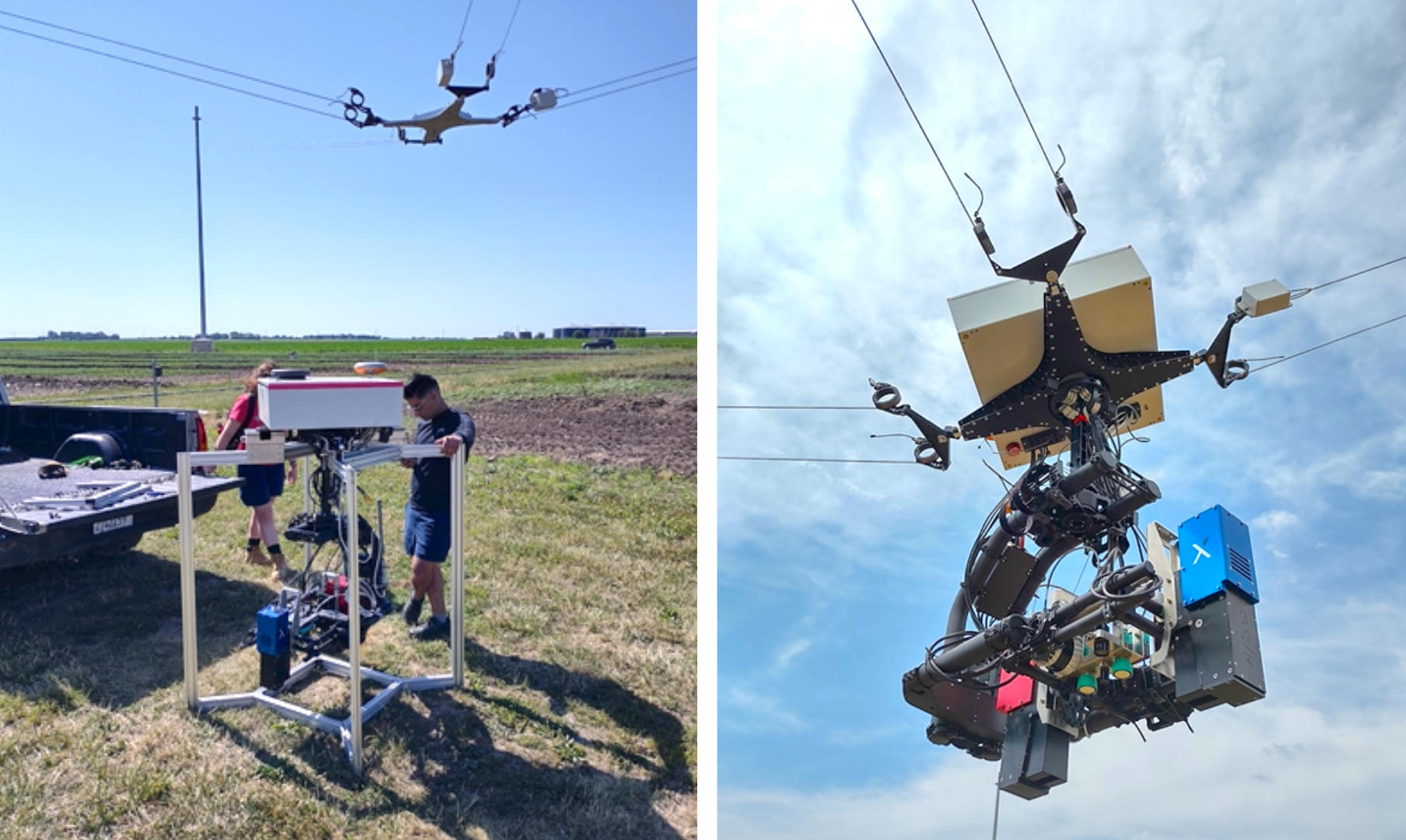
This is the sensor package that we use to make measurements in the RIPE projects. The white, weatherproof case up top contains the computer that stores data and communicates with the RAPP towers. The carbon fiber skeleton is a movie grade gimbal that uses motors to keep the sensors balanced and still. The red and blue instruments are hyperspectral cameras that can "see" wavelengths from the Ultraviolet all the way into the far infrared. The two green knobs are ultra sonic sensors installed for safety. They detect if the system is within 2 meters of an object and stop. The puck-like object above the ultra sonic sensors is a light radar. They've been popular for driverless cars but are an amazing tool for measuring the growth and structure of plants. There are also two webcams that allow you to see what's directly below the dolly.
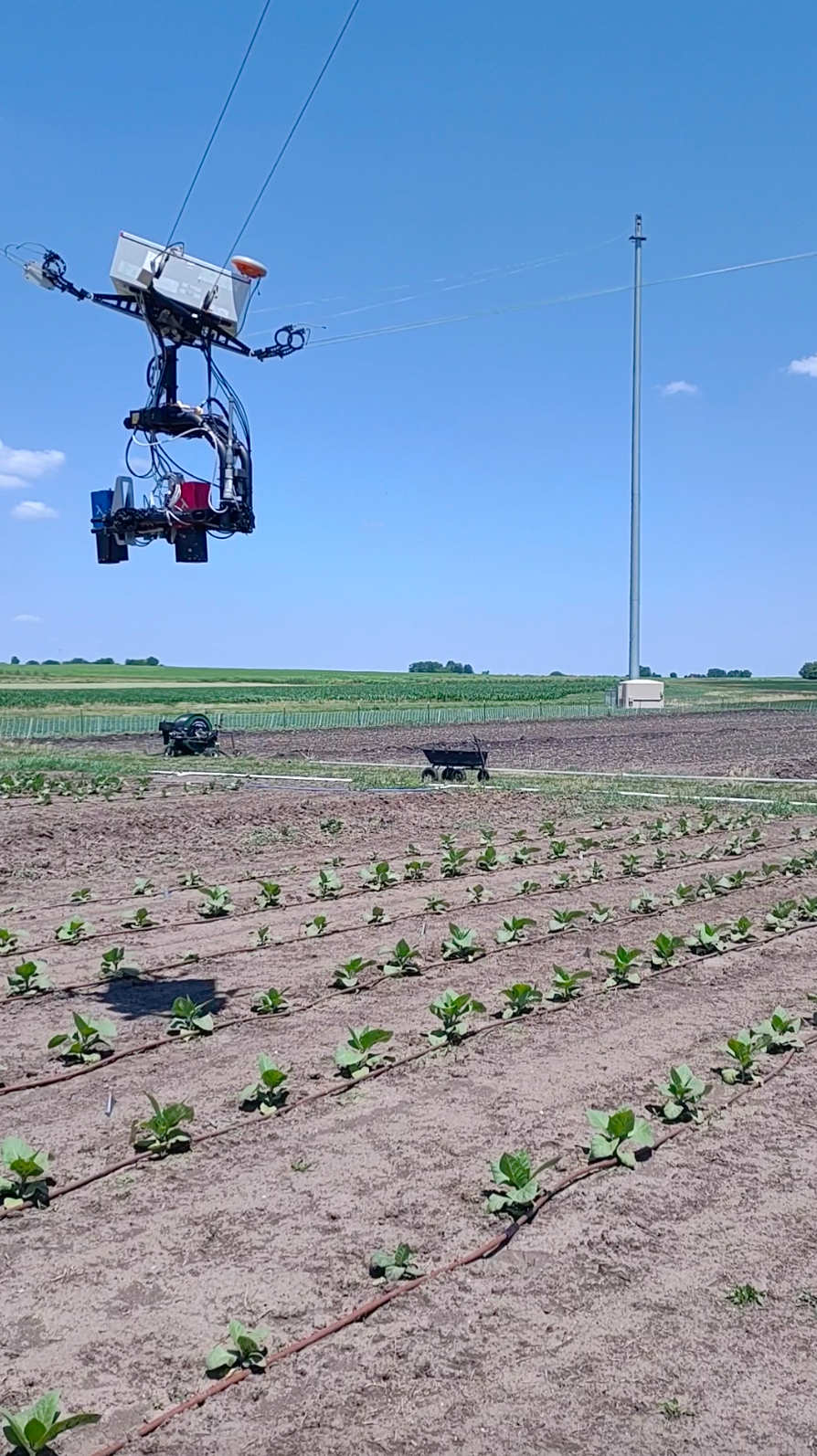
Here is what it looks like when the measurement system is moving over a research plot. It would be a shame to have to measure productivity by killing the plant and measuring it's weight. This technology allows you to measure growth non-destructively as often as you can pass the sensor overhead. Hyperspectral cameras can be used to detect all sorts of interesting characteristics in plants. Within the RIPE project, Katherine Meacham-Hensold and Peng Fu have done amazing work showing how hyperspectral cameras can detect important differences in photosynthetic parameters.
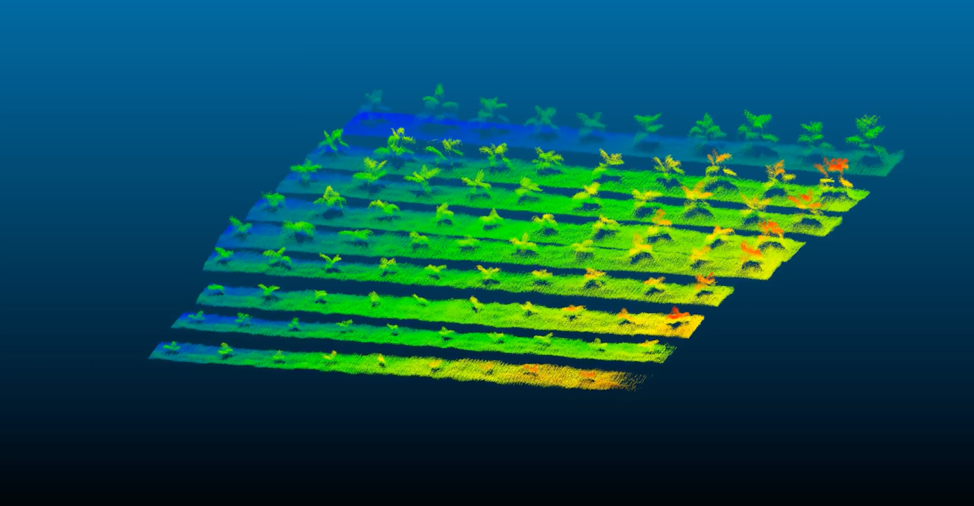
Here is what some of the results look like from a lidar sensor. It is an amazing tool for measuring the physical characteristics of plant growth. And it creates a digital archive of that growth that can be collected non-destructively and analyzed long after the plants are gone. Each strip here shows a lidar measurement of a 10-plant plot of tobacco. Looking up the image, you can see how each plant grows over time. The image is false-colored based on height.
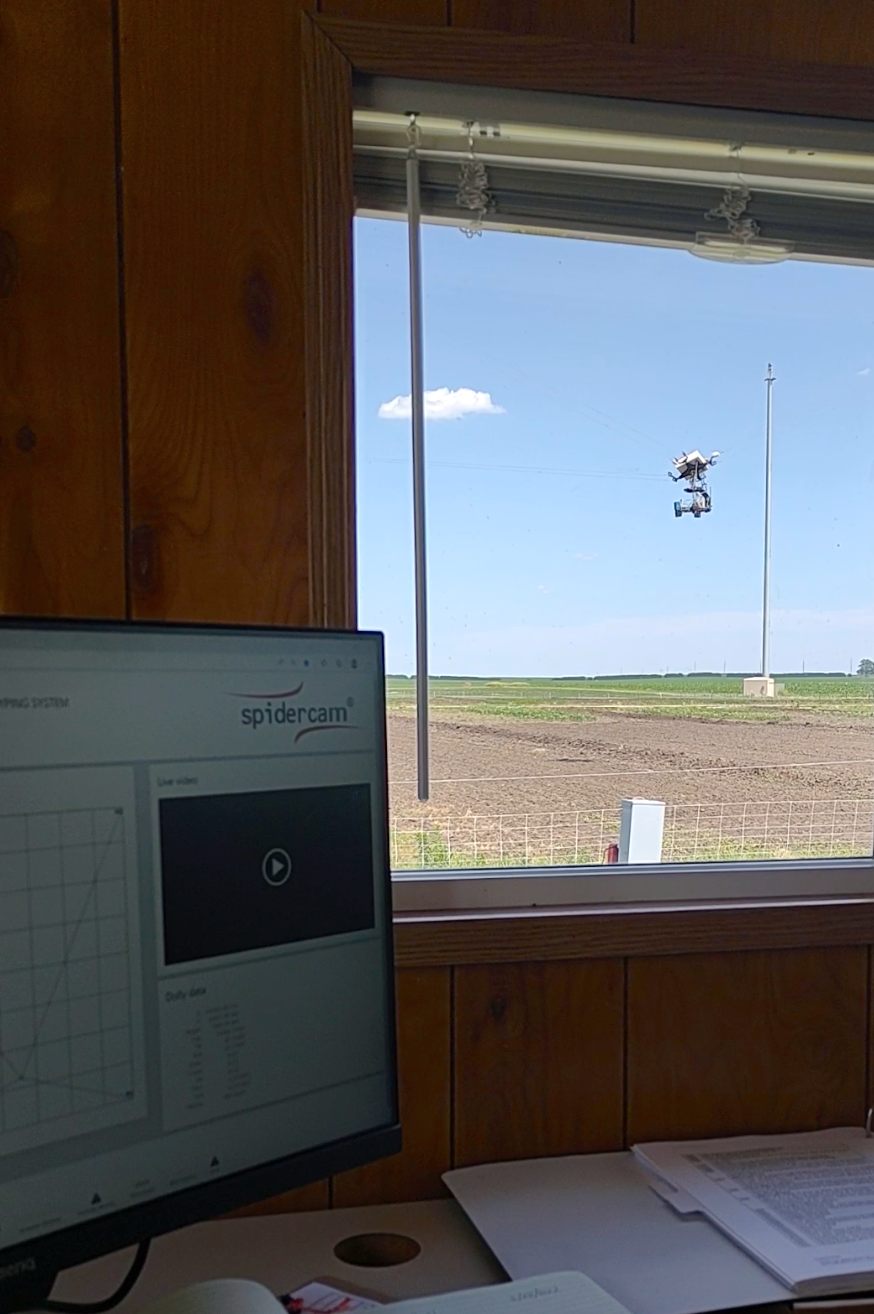
Thanks for checking in and stay tuned for what's next under the RIPE Aerial Plant Phenotyping System. Here's what the platform looks like from inside the trailer. As someone that had to pull carts and stand out in the hot field to make these measurements in the past it's great to be able to do this from a climate-controlled trailer.
